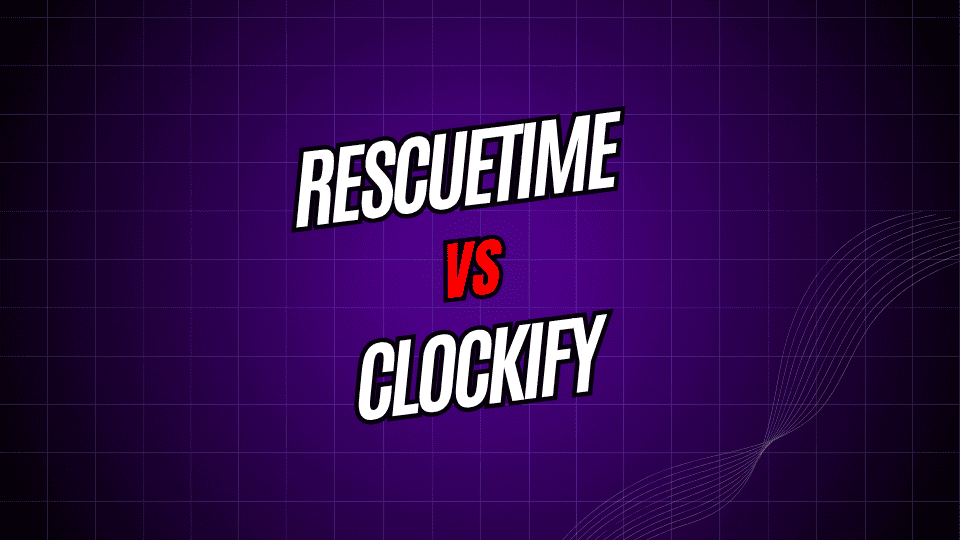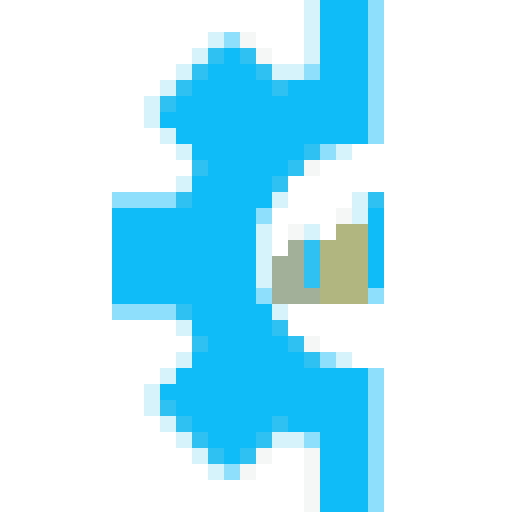
Time-tracking apps now are must-haves for professionals, freelancers, and teams keen to sharpen productivity and figure out where the workday actually goes. Two names that keep coming up are RescueTime and Clockify. Both swear they can help you spend time more wisely, but they do it in very different ways.
RescueTime runs in the background, keeping tabs on your digital life and spitting out reports on how you spend time across your devices. Clockify, on the flip side, sticks to old-school, hands-on time tracking and layers on solid project management tools. Which one you should pick depends on how you work, what you need, and where you want to go.
In this side-by-side look, we’ll break down what RescueTime and Clockify do best. By the end, you’ll know which one fits your workflow.
What is RescueTime?
RescueTime is a set-it-and-forget-it time tracker that lives quietly on your computer and mobile devices. After you download it, the app follows your digital habits all day, sorting websites, apps, and tasks into categories. At the end, it gives you clear reports that show how your time actually adds up.
RescueTime: Your Silent Productivity Coach
RescueTime quietly logs your online and offline activity to show how you spend your day. Rather than asking you to pause and resume timers, it runs in the background and translates your behavior into productivity scores. You’ll see everything mapped out in clean graphs, making it simple to spot where you burn time, and where you shine. Key components include automatic productivity scoring, exhaustive activity overviews, goal-setting features, and scheduled focus time. You can even block distracting sites and apps during your designated work periods.
Clockify: Time Tracking Made Simple
Clockify, on the other hand, is all about hands-on recording. You hit start and stop to capture the hours you spend on each task, or you can fill in the gaps after the fact. This makes it ideal for teams that bill clients or want to fine-tune project budgets. You’ll find tools to keep projects, teams, and tasks organized, plus reports that slice through data to show where every minute goes. Because it supports an unlimited number of users, admins can easily manage permissions and keep everything running smoothly.
Core Differences Between RescueTime and Clockify
Tracking Methodology
The biggest difference is how the two tools track time. RescueTime runs in the background on your computer and mobile devices. It starts immediately after installation, watching which apps and websites you use and grouping them into categories. It learns from your habits and updates tags automatically, so you don’t have to lift a finger.
Clockify, on the other hand, asks you to click a start button whenever you begin a task and a stop button when you’re done. You also have to pick which project or task the time belongs to. This means you have complete control over what you track, but you must remember to start and stop the timer every time to keep the records accurate.
Primary Use Cases
RescueTime is aimed at anyone wanting to see their overall productivity and digital habits. It works well for office workers, students, and remote employees who spend long hours on computers and want to figure out where their time really goes so they can work more effectively.
Clockify focuses on teams, freelancers, and companies that bill by the hour or need detailed time records for payroll and project management. It shines in agencies, consulting companies, and any organization where tracking billable time and understanding project costs are essential.
Data Granularity
RescueTime gives you a general view of how you use your digital tools. You can see total time spent on websites, apps, and different activity groups. This high-level picture helps you spot overall trends, but it doesn’t break things down to specific projects or tasks.
Clockify, on the other hand, drills down to the task level. You can track time spent on different projects, clients, or specific tasks, which is a big advantage for accurate billing and in-depth project analysis.
Feature Comparison
Reporting and Analytics
RescueTime’s reports revolve around your productivity trends and digital habits. Each week, it sends you a summary showing your best hours, the apps you used the most, and your productivity score. With this info, you can spot repeating patterns and adjust your habits for better focus and efficiency.
Clockify’s reports, however, are geared more for teams and projects. You can create customized timesheet reports, project summaries, or team productivity dashboards. Filters let you sort by dates, project names, or team members, making the data useful for business stakeholders.
Goal Setting and Productivity Features
RescueTime helps you set productivity goals and track how well you meet them every day. You can create daily targets, and if you start spending too much time on unproductive tasks, RescueTime will send you an alert. It can also block distracting websites during your work times to keep you on track.
Clockify focuses on project planning and time estimation. You can create budgets for how much time you want to spend on a project and check how your actual time compares to that estimate. If you get close to the project limit, Clockify will send you a warning so you can finish on time.
Team Collaboration
RescueTime works best for individuals. It has a few team dashboard features to give you a high-level view, but it doesn’t offer the collaborative project tools or detailed time tracking that teams often need.
Clockify, on the other hand, is built for teams. You can create user groups, share projects, and manage who can do what. Team leaders can assign tasks, check how the whole team is doing, and set permissions depending on each person’s role.
Pricing Structure
RescueTime has a free version that includes basic time tracking. If you pay for the premium version, you get extra features like detailed reports, goal tracking, and website blocks. The pricing is clear, with separate plans for individuals and teams.
Clockify offers a solid free tier with unlimited time tracking, unlimited projects, and basic reporting for any number of users. If you need extra features—like approving time, advanced reporting, and more integrations—you’ll need to subscribe to one of the paid plans.
Which Tool Should You Choose?
Go with RescueTime if
You want time tracking that runs in the background with little to no upkeep. RescueTime is designed for anyone who wants to see how they spend their time online and make smarter choices, all without the hassle of logging hours manually.
This tool suits knowledge workers, students, and professionals who care about their work habits but don’t need to break time down by specific projects. It’s especially helpful for those who find it hard to stick to the discipline of manual tracking.
Choose Clockify if
You need accurate time logging tied to specific projects, especially for billing, payroll, or project oversight. Clockify is a strong pick for freelancers, agencies, and teams that must keep tabs on billable hours or want to see which projects are profitable.
It’s also great for organizations that require team features, project management tools, and in-depth time reporting to support business needs.
Choosing the Best Time Tracker for Your Workflow
Deciding between RescueTime and Clockify comes down to what matters most in your work style. RescueTime quietly tracks your computer use, spotlighting your habits and productivity. It’s great for anyone who wants to boost personal efficiency. Clockify, on the other hand, specializes in project timekeeping and team collaboration, making it the go-to for businesses that need tight oversight on billable hours and group deliverables.
Ask yourself what you hope to gain: Is your goal to fine-tune how you spend your minutes, or do you need to keep precise tabs on team projects and hours? That’s the question that’ll steer you to the tool that fits.
Since both RescueTime and Clockify offer free starter plans, you can explore them risk-free. Spend a week or two logging your routine and data in each app, and pay attention to which interface feels easiest and which reports help you the most.
